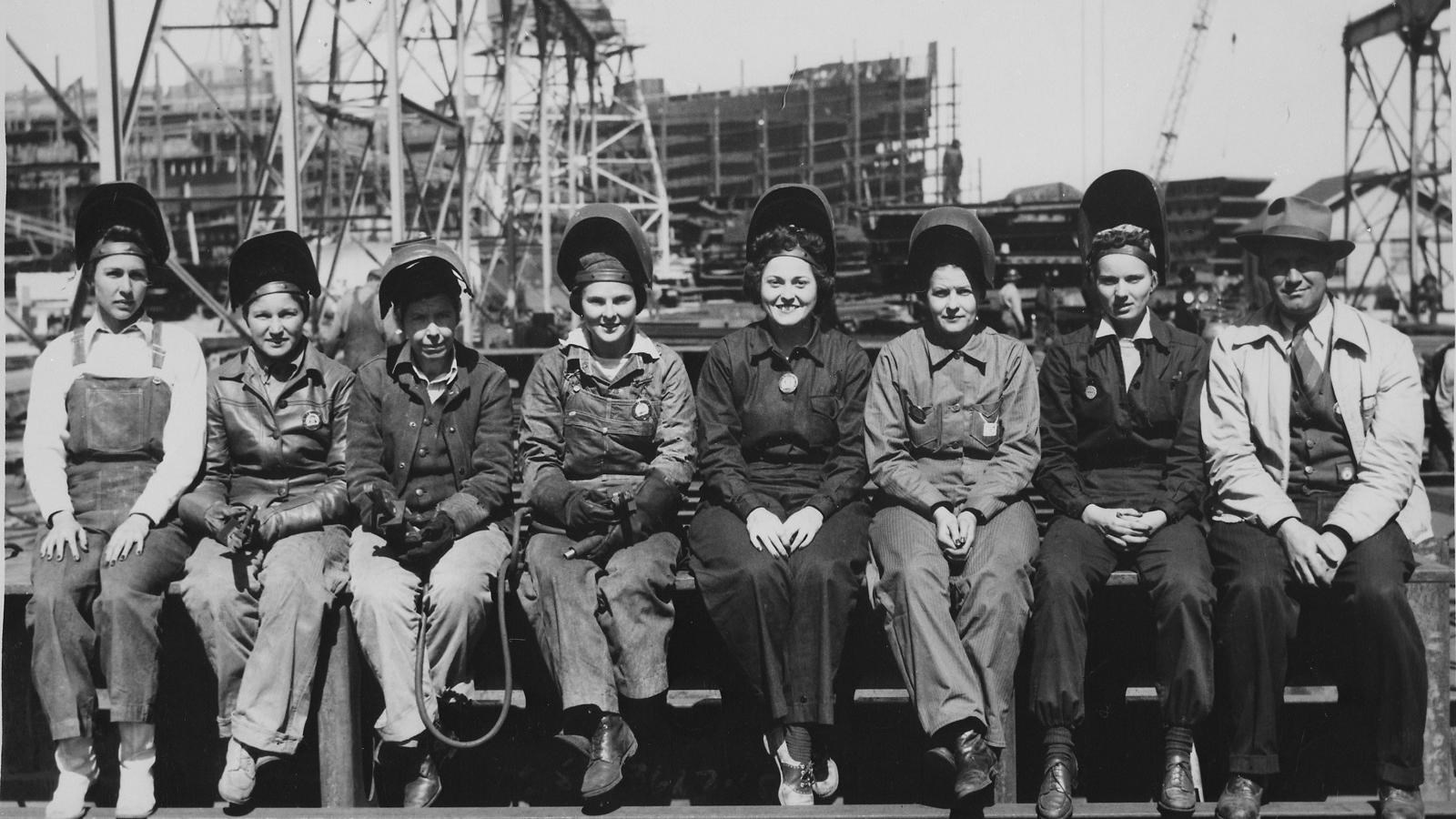Last updated: September 21, 2023
Place
Pascagoula, Mississippi

Spencer Beebe, 1943. NARA 86-WWT-85-35
American World War II Heritage City
Contributions to America’s World War II home front in the Pascagoula war effort began before Pearl Harbor when the Ingalls Iron Works shipyard started building ocean-going barges (eventually at the rate of two vessels every 10 days) in late 1938. Ingalls also built building C-2, C-3, Type-C Liberty ships (producing one ship every 18 days), and Attacker-class escort carriers, for a total of some 90 vessels. Walker Shipyard steadily built 40 ocean-going tugs for transporting oil and gas along the U.S. shoreline. The U.S. Corps of Engineers worked to ensure coastal and internal navigation.
Other city industries quickly converted from peacetime manufacturing to defense production. The Jackson County textile mill, hired 400 additional workers to meet demand for uniforms, overcoats, and other clothing, while the Pascagoula Decoy Company shifted to the production of paddles, oars, and other tools. Coastal maritime industries also contributed: canning shrimp, oysters, and fish, as well as processing Menhaden for fish meal and fish oil—a major source of fertilizer and poultry feed.
From the very start, Pascagoula raised money for the war effort, and it came from every segment of the populace. The community issued $100,000.00 in bonds to clear the land along the river and lay the foundation for the new Ingalls shipyard. Local citizens held drives to aid the beleaguered people of Finland, Greece, and throughout Europe, as well as in China. In terms of war bonds, the city easily surpassed its goal of $800,000—totaling over $1 million in sales. An African American Women’s Club hosted a very successful benefit for the Red Cross Fund. Local school children raised enough money ($110,000) to fund the acquisition of an “ambulance plane.”
Pascagoula’s adaptations to wartime called for the overnight transformation of a small fishing and boatbuilding town of fewer than 4,000 people into a modern industrial powerhouse of nearly 38,000. Housing shortages were an immediate condition, especially with limited areas in which to construct new residences. One community of “Navy Houses” (over 1,000 units were built) still survives and has been recognized with a historic marker. Other improvements included schools, a post office, and recreation facilities for both civilians and military personnel. Workers at the Ingalls shipyard represented folks from across Mississippi and the South who had migrated for war work. The USO and La Pointe-Krebs House hosted a variety of social events throughout the war. Simply put, the little town, now suddenly became a city.
In addition to volunteer efforts to boost troop morale, the people of Pascagoula supported campaigns to collect surplus war materials, such as scrap drives for paper, tin, aluminum, and rubber. Women volunteered as ambulance drivers and citizens opened their homes to help address housing shortages. Local civil defense groups were also widely supported, which due to German U-boat activity in the Gulf of Mexico and the potential for sabotage, was a necessity. Local fishermen and shrimpers used their maritime knowledge to watch for enemy vessels and aircraft.
World War II remains a real presence in Pascagoula to this day: with a substantial portion of the city’s present-day infrastructure, street grid (and names), housing, schools and recreational facilities established during the war. Now enlarged, the city’s football stadium was dedicated as War Memorial Stadium in 1948. The 1938 Old Ritz Theater was a prominent entertainment venue that has been adaptively used as a law office. Local memorials include a bas-relief carving of three shipbuilders from World War II located near the county courthouse and a plaque on the grounds of the LaPointe/Krebs House. Local organizations and schools recognize the significance of the home front period in public programs and tours.
